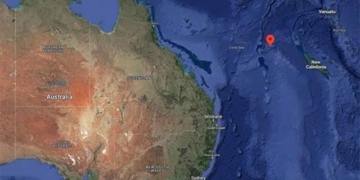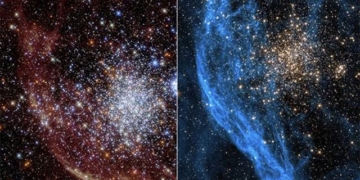The Parker Solar Probe conducted its 14th close flyby of the Sun on December 11, as part of its mission to unravel the mysteries of our star.
At the closest approach to the Sun (perihelion) at 8:16 PM on December 11, Hanoi time, Parker flew through the solar corona, approximately 8.5 million kilometers from the surface of the star, at an astonishing speed of 586,829 km/h, more than 200 times faster than a bullet fired from a rifle and quicker than any spacecraft ever built.

Simulation of the Parker Probe flying past the Sun. (Photo: NASA).
However, this is not the limit for NASA’s probe. In 2025, Parker is expected to come even closer to the Sun, reaching a distance of about 6.2 million kilometers from the surface and flying at speeds up to 690,000 km/h, fast enough to travel from Philadelphia to Washington, D.C. in just one second.
At perihelion, Parker faces intense radiation and extreme heat, reaching up to 1,400 degrees Celsius. To withstand these harsh conditions, the spacecraft is equipped with an 11.43 cm thick carbon-composite heat shield, which keeps its scientific instruments at room temperature.
One of the primary goals of the Parker Probe is to study the solar corona, the outermost layer of the Sun’s atmosphere. The collected data could help solve one of the biggest mysteries about the star: why is its atmosphere hotter than its surface?
Physical theories suggest that as one moves deeper into a star’s plasma, the pressure increases and the star becomes hotter. However, the corona challenges this understanding. Despite being thin and diffuse, the plasma in the corona is hotter than the plasma in the underlying photosphere. The temperature in the corona soars to 1.1 million degrees Celsius, while just 1,600 kilometers below it, the denser photosphere, which is more than 10 million times thicker, reaches only 5,500 degrees Celsius.
Studying the corona from Earth is very difficult because the light it emits is overshadowed by the much stronger light from the photosphere, meaning the corona can only be seen during a total solar eclipse, when the Moon blocks the light from the photosphere.
Therefore, the Parker Probe needs to get as close to the Sun as possible to gain a better understanding of the corona, the layer responsible for emitting solar wind, a stream of charged particles that can disrupt power grids and communication infrastructure on Earth.
Parker’s next closest approach to the Sun will be on March 17, 2023, also reaching a distance of 8.5 million kilometers above the Sun’s surface. Later this year, the spacecraft will fly past Venus to adjust its trajectory for a closer approach to the Sun as its mission nears completion in 2025.


















































